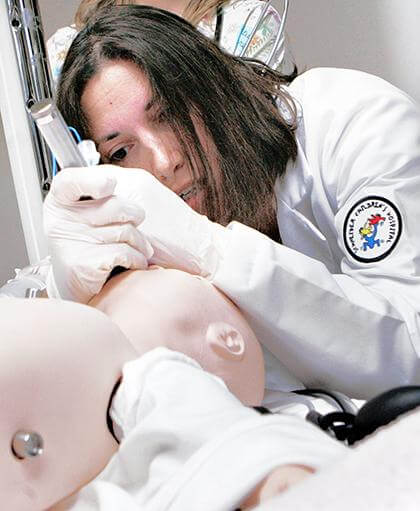By Howard Koplowitz
The North Shore-Long Island Health System last Thursday unveiled its newly expanded Patient Safety Institute, which is used by hospital staff to train against preventable medical errors.
The facility at 1979 Marcus Ave. in Lake Success, L.I., will also be used by students at the medical school the health system is creating in partnership with Hofstra University. The medical school is expected to open next year.
A tour of the institute featured three nurses from the pediatric intensive care unit at Cohen Children’s Medical Center working on a simulated case of a baby having difficulty breathing.
The room where the simulation was being performed included the latest electronic medical equipment and one nurse even used hand sanitizer before working on the plastic baby, which let out cries.
“This is about promoting patient safety and quality,” said Michael Dowling, president and chief executive officer of North Shore-LIJ. “You will rarely find a place as comprehensive as what we have here in any place else.”
Dowling said the institute replicates real-life medical complications “so you can afford to make mistakes here instead of on real people.”
North Shore-LIJ Chief Medical Officer Dr. Lawrence Smith said the institute uses sets of technologies to create “real-action learning.”
Smith said the institute will be beneficial to students at the medical school, who can apply what they learn in books at the center.
He said the facility is also equipped with video so students can learn from their mistakes.
“There is nothing more powerful than watching yourself doing something wrong,” Smith said.
He said the institute will enable the students to tackle once-in-a-year medical situations every 30 minutes, including an obstetrical problem that occurs during delivery, which is usually seen only once during a four-year residency but can be handled many times at the facility.
The institute uses actors who are trained to act out certain disease states so medical students can hone their diagnostic skills.
Smith said the institute also has procedure simulators so students can learn everything from routine skills like drawing blood to more complicated spinal taps and cardiac catheterizations.
“This is radically different from medical education 20 years ago and medical education five years ago,” he said. “This is far superior to the old way of educating.”
Jeanette Nicosia, one of the nurses participating in the simulation, said it helps her deal with real patients at the hospital.
“It makes everything very real and we understand what’s going on,” she said. “It’s a team effort and you have to work as a team in order for something like this to work.”
Reach reporter Howard Koplowitz by e-mail at hkoplowitz@cnglocal.com or by phone at 718-260-4573.































